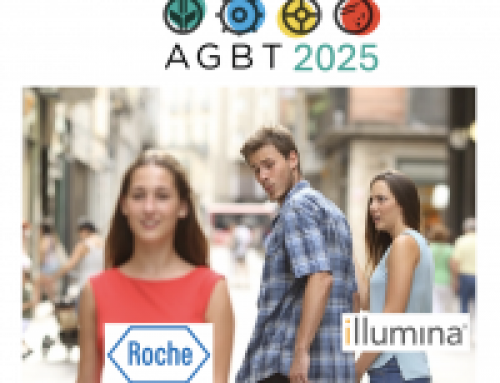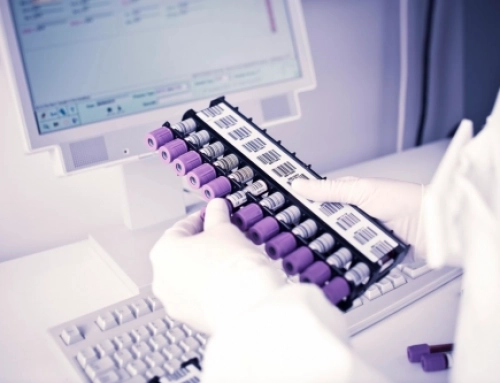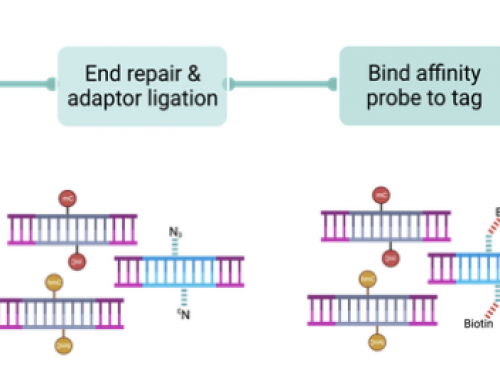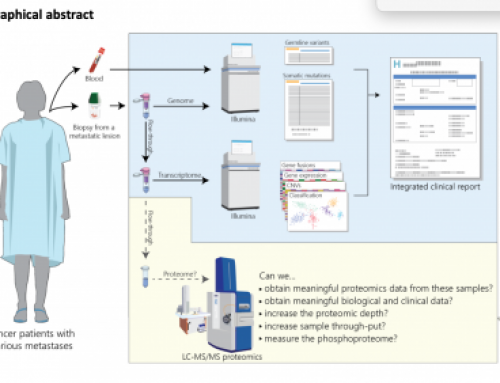Qiagen are now finally selling the GeneReader after a hiatus of several years. This was caused by issues getting a working instrument out of the original IBS technology, and also held, temporarily, up by recent Illumina litigation. GenomeWeb covered the relaunch back in November. Qiagens updated chemistry “circumnavigates Illumina’s IP” and provides “enhanced sequencing performance characteristics”. In the GenomeWeb article Peer Schatz (Qiagen CEO) referred to Illumina’s IP estate as “rubble”. It was a pretty quietly reported news item and I missed any coverage at the time – this is somewhat surprising as Illumina’s dominance is clearly being challenged by a someone other than CGI and Ion Torrent – and Qiagen are making waves.
Qiagen’s acquisition of Intelligent Bio-Systems in 2012, their sequencing-by-synthesis (SBS) chemistry, and instrument – MAX-Seq was a push by Qiagen into the NGS diagnostics space. IBS licensed in a chemistry, from Jengyue Ju at Columbia University in 2006. The Ju et al chemistry was uncannily similar to the original Solexa chemistry. Four reversibly labeled terminator nucleotides, added as a mix in a multi-step process: incorporation, synchronisation, detection, and cleavage. The MAX-seq was launched as a competitor to Illumina’s GAIIx and generated around 60Gb on two 8-lane flow cells, from 100 million reads per lane and 50bp reads. Two-flowcells and the run speed were something Illumina user would have to wait for!
The GeneReader consists of more than just a sequencer. The QIAcube is used for automated DNA extraction and library preparation (see below), and a modified version doubles as Qiagen’s equivalent to Illumina’s cBot for their version of clustering. The GeneReader is a benchtop sequencer, although more the size of a GAIIx than a MiSeq; but Qiagen have been unwilling to be drawn on specs, preferring to focus on results. This, perhaps most importantly for users, is Qiagen’s aim to supply a true “Sample to Insight” solution. The packaging of Qiagen’s cancer panels with software for lab tracking and analysis (CLC bio and Ingenuity) is likely to be attractive to molecular labs that are uninterested in the joys of research sequencing, but simply want to deliver results to patients.
“Is Qiagen’s “sample to insight” solution enough to sway Illumina users?”
The GeneReader runs up to four flow cells at a time, each with up to ten samples; and flow cells can be added mid-run using a “turntable” inside the instrument. But whether users treat the GeneReader as just another sequencer remains to be seen. I am unclear about whether Qiagen will allow opecn-access to the system to allow users to run RNA-seq, etc. Qiagen has long maintained that the GeneReader itself, and the per-base sequencing accuracy and other specs are not their focus – here the sum is really more than the individual parts. This is what underlies the “Sample to Insight” philosophy.
Cancer panels and ctDNA: Many liquid biopsy researchers will already be using Qiagen’s cell-free DNA extraction kits. So their kits and panels for ctDNA analysis are likely to be of interest too. The PCR panels use molecular barcodes to remove PCR duplicates, and come with the software tools for analysis and reporting; e.g. an 8-gene cancer test covering 118 amplicons and 7104bp covering genes like BRAF and EGFR.
PS: I’ve not heard about FDA submission or similar yet.









[…] platform developed for the clinic and aims to deliver a sample-to-answer solution. I covered the “launch” of the instrument at the end of 2016 and summarised some of the details but there was no public […]